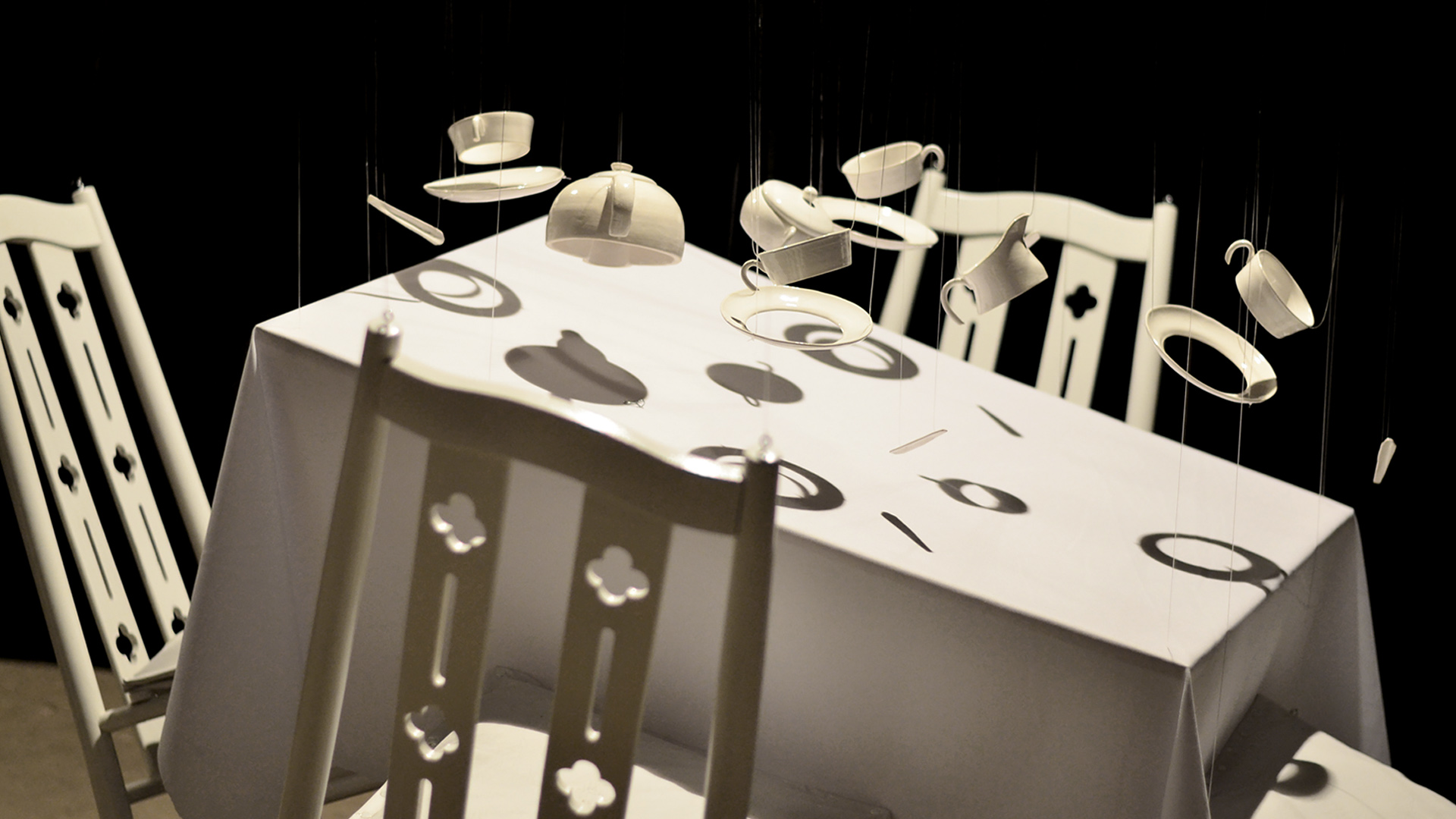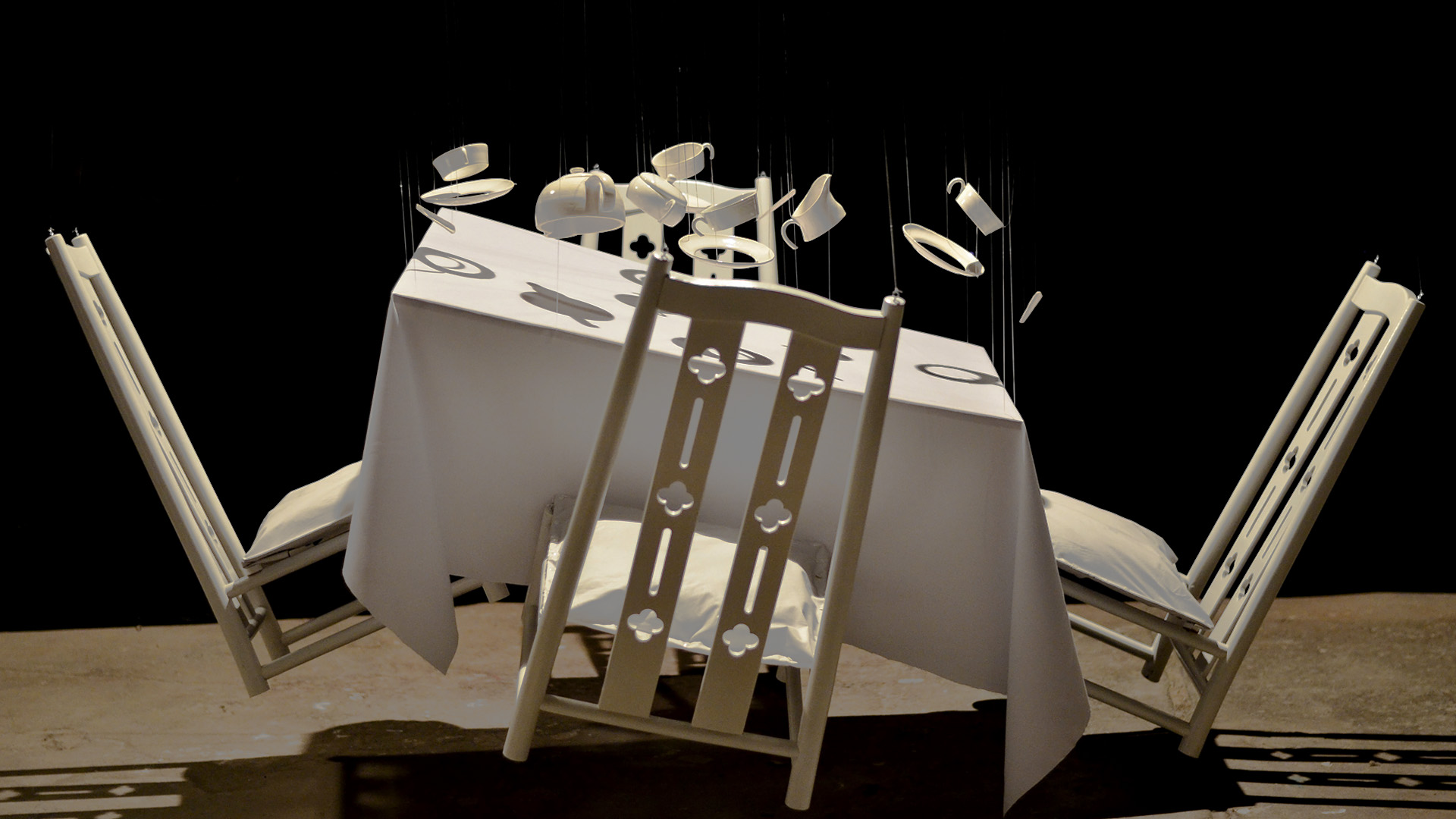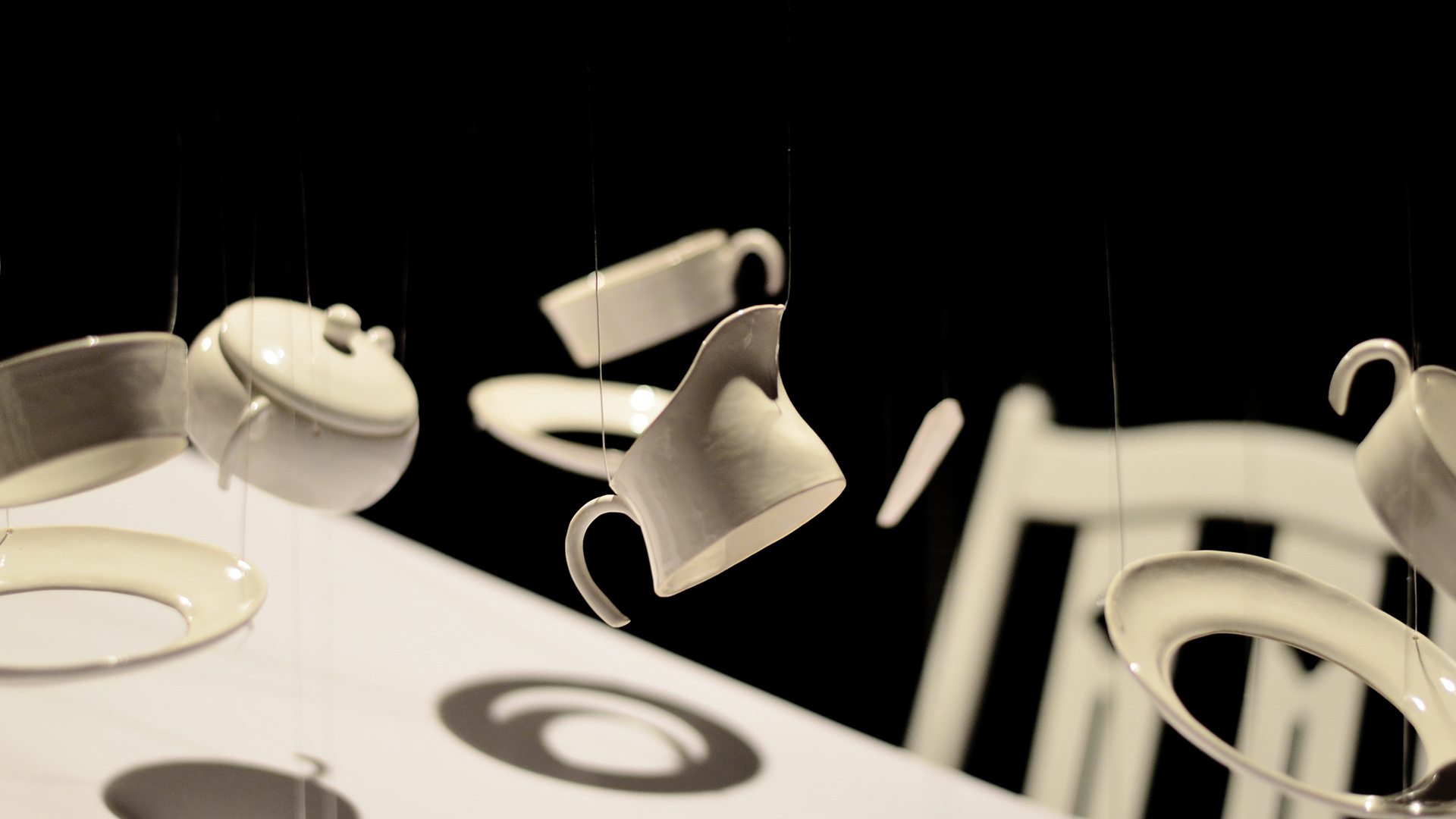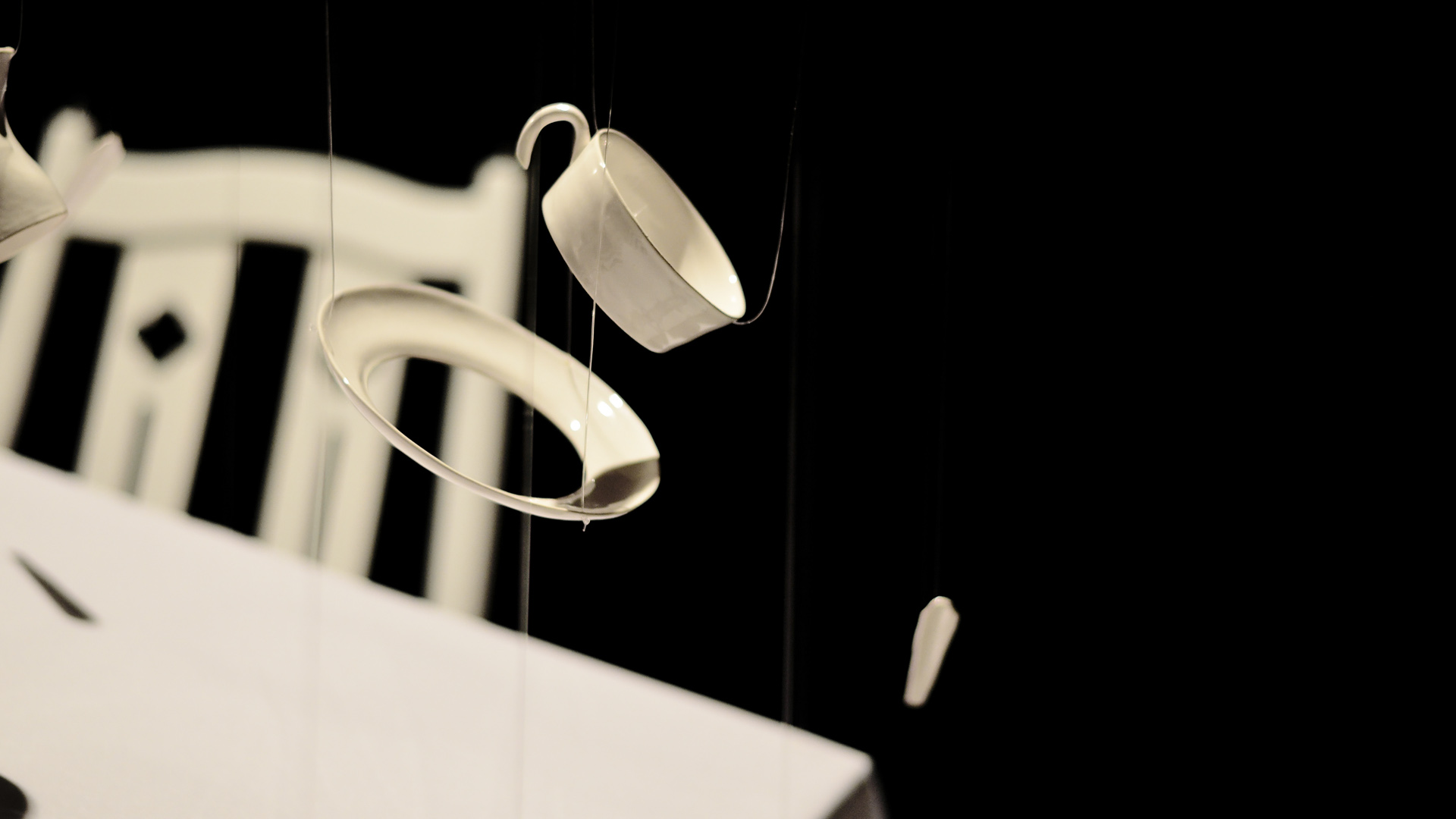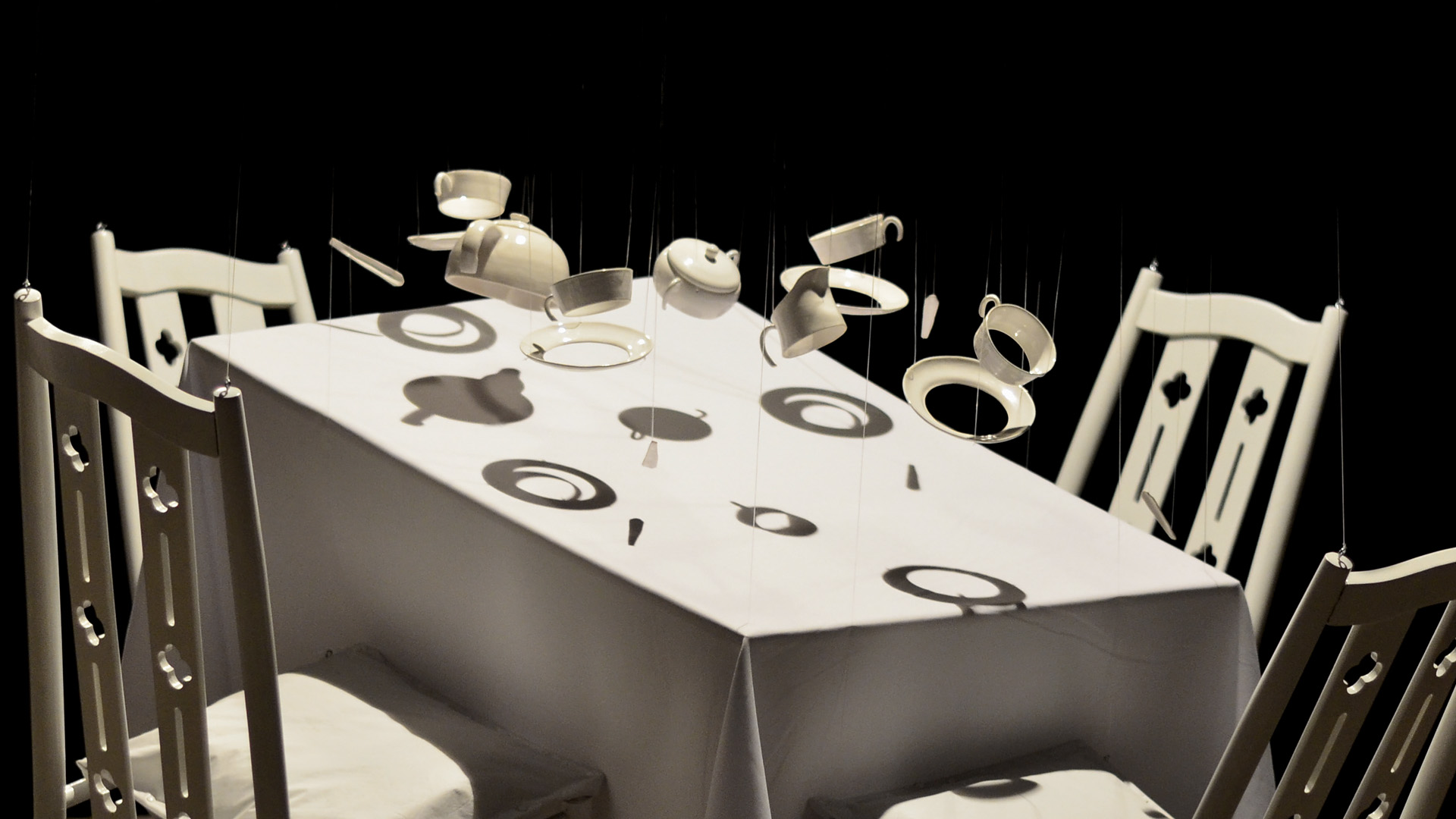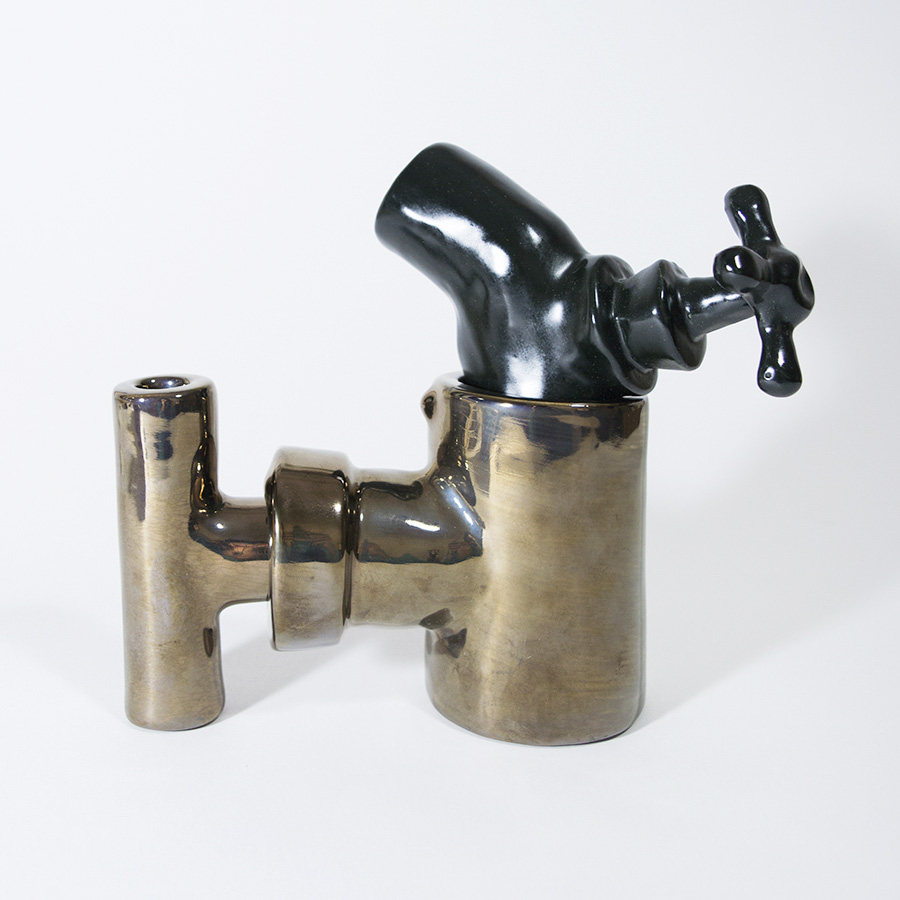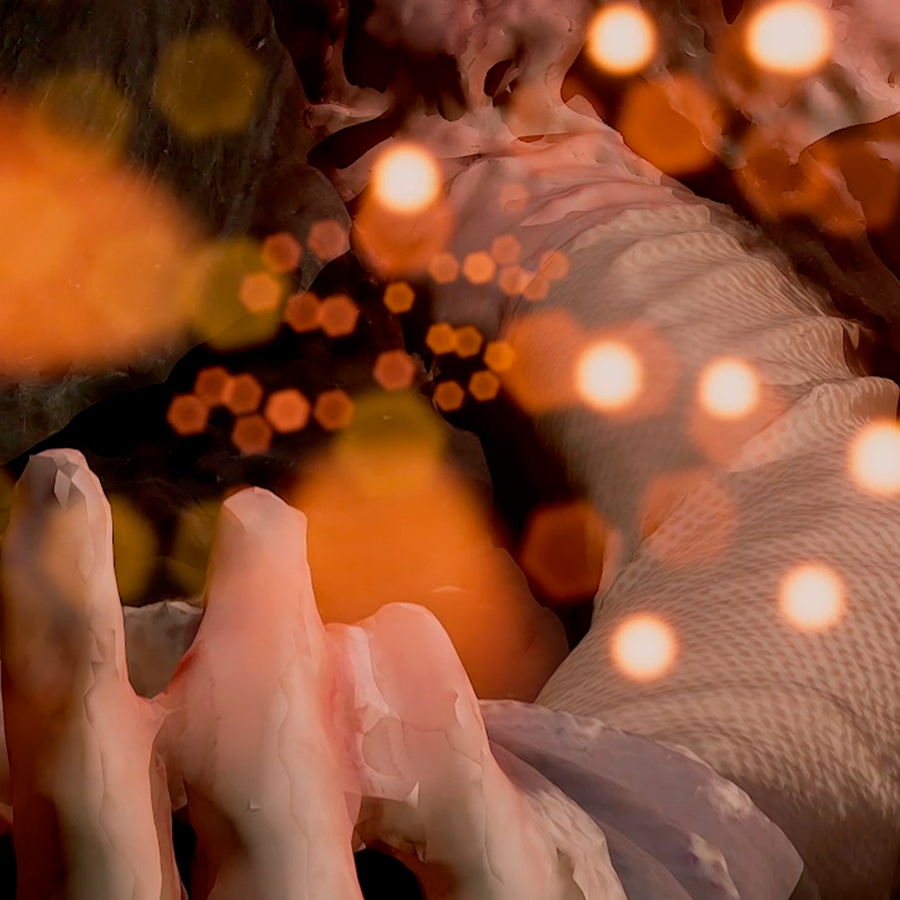Activities
Exhibitions, Semillero (Seedbed)
The South of Things
Nicolás Rodríguez
02.12.20
“My work is a free exploration between daily practices, uses and habits of language, imaginaries, roles and assumed historical places that put into question the idea of culture together with the intersubjective, the bonds and material relationships, thus shaping the world system of which we are part and from which a series of symbolic articulations of meaning and power unfolds. I am interested in observing the relationships between ways of doing, ways of thinking and the possibility of constructing meaning in doing.” Nicolás Rodríguez.
El sur de las cosas (The South of Things)
180 x 110 x 100 cm
Ceramic, wood, fabric and fishing line
2017
“Decolonization means that I cease to be the colony of a foreign culture that I believe is mine and that is false, it is not mine, but that of others and I believe it is mine”. E. DUSSEL
El Sur de las cosas (The South of Things) is born as a point mark on that part by which the totality of a body is supported.
The work presents a tea table for four people where all the elements lack its lower part, and therefore it falls apart. The suspension suggests a fall in pause, which invites the viewer to go through it having a different encounter with space-time in the face of the uncertainty of the scene.
The choice of tea, as a daily practice, refers to a particular custom brought from Europe and initially appropriated by the upper social classes of our region. One more of the many that were deployed from the beginning of the formation of an independent and sovereign territory and that, in their accession, gave a sense of belonging to the hegemonic historical and cultural line.
Over time, the idea of ownership and belonging reinforced a model of cultural dependency in which the South provides resources to the North in exchange for history.
BIO
Nicolas Rodriguez
1986 | Godoy Cruz, Mendoza
Lives and works in Buenos Aires
EDUCATION
2018 | PAC Project, Contemporary Artistic Practices. Gachi Prieto Gallery, CABA, Argentina
2015 | Bachelor of Visual Arts, National University of the Arts (UNA), Buenos Aires, Argentina
EXHIBITIONS
2019 | Jardines de Buenos Aires, El Patio no2, Gachi Prieto Gallery, CABA, Argentina
2018 | Los preciosos contornos, Gallery A place in the world, Buenos Aires, Argentina
2019 | 107th National Visual Arts Salon, Emilio Caraffa Museum, Córdoba, Argentina
2019 | Canto al Trabajo, El Obrador Creative Center, CABA, Argentina
2018 |El placer del Exilio, Gachi Prieto Gallery, CABA, Argentina
2018 | Ecocida, Museum of Hunger, CABA, Argentina
2018 | Un sueño hecho realidad, Ambos Mundos Gallery, Buenos Aires, Argentina
RESIDENCIES
2020 | Zeitgeist Residence, Tigre, Buenos Aires, Argentina
AWARDS
2019 | 10th Itaú Visual Arts Award, 1st Honorable Mention, 3D Printing Special Category, Casa Nacional del Bicentenario, CABA, Argentina
2018 | 107th National Visual Arts Hall, 1st Prize Ceramics, National House of the Bicentennial, CABA, Argentina
OTHERS
2019 | Agua Dulce Project, research and development of work in the territory, CONICET, Entre Ríos, Argentina

